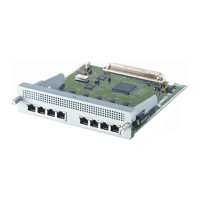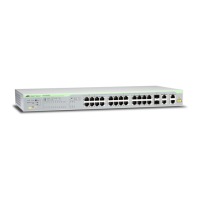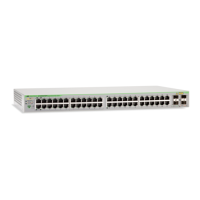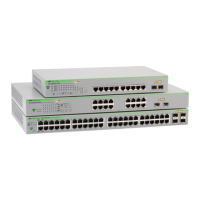ACL for the SBx3112 Introduction
6-33
Software Reference for SwitchBlade x3100 Series Switches (Access and Security)
• TCP source and/or destination port numbers.
• APPLICATION abstract rule types that provide a predefined set of rules such as a rule to permit or deny
NETBIOS, DHCP and subscriber multicast traffic (FUM). These rule attributes are expanded by the
internal traffic management system into one or more classifiers.
Note: Application ACLs (for example NETBIOS ACL) do not cover protocols running over IPX.
6.4.3 ACL for the SBx3112
ACLs will also be qualified by the SBx3112 as follows:
• Conflicting match fields on a single rule will be rejected.
• Internally, there are some automatic match qualifications that are derived. For example, if the user con-
figures an access list with a TCP source port rule, the system will automatically add match qualifiers for
the layer 2 protocol field to be IPv4, and the IP protocol field to be TCP.
The SB x3112 supports up to 96 rules per ACL (+ 1 default deny rule), while the iMAP supports up to 35 rules
per ACL.
On a card basis:
• XE4 - can hold a full access list of 96 rules on all 4 ports
• GE24POE - up to 44 rules of the same type per port
• GE24SFP - up to 44 rules of the same type per port.
6.4.4 Configuring ACL
6.4.4.1 Default Configuration
When the SBx3112 is first installed and in service, there are no ACCESSLIST names.
6.4.4.2 Configuration Guidelines
•
If enabled for filtering of dynamically learned DHCP IP addresses, dynamic DHCP IP filters are preserved.
• The user can set the default DENY or PERMIT rule for accesslists using the CREATE or SET ACCESSLIST
command. See the example that follows for details.
• Filtering can be applied to the MGMT and inband interfaces. This allows the user to block certain packets at
thc CFC CPU preventing them from being processed.
• Hardware classification resources on ingress ports are limited. In the event the system experiences conten-
tion for resources, an alarm will be raised on the port.
• The user is not allowed to add an access list to a port that currently has classifiers in the precedence range
reserved for access lists. The user must remove those classifiers on the port before being allowed to add the
access list.
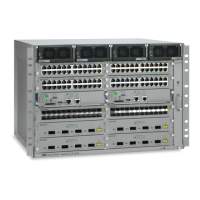
